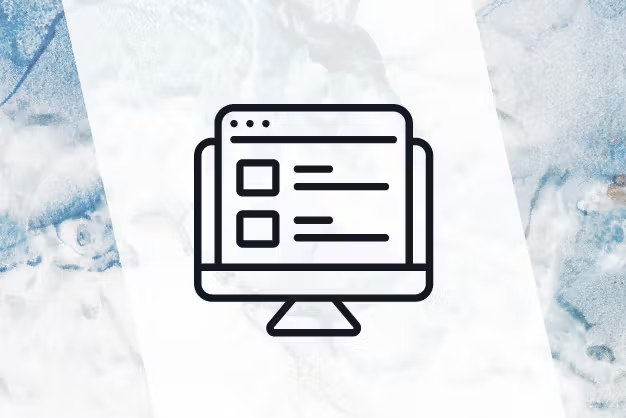The Future of Financial Compliance, Part 1: Challenging Accepted Wisdom


This article was written by Tom Fox, renowned author, blogger, columnist, and speaker, also known as the Compliance Evangelist. It was originally published on FCPA Compliance & Ethics Report supporting a special 5-part podcast series originally aired on Compliance Podcast Network. Tom sat down with Phil Fry, VP of Go-to-Market Strategy at Verint, to talk about how Verint is changing the future of financial compliance by challenging accepted wisdom through capture, control, sustainability, and oversight.
In this special five-part podcast series, I visit with Phil Fry, VP Go To Market at Verint, which is the sponsor of this podcast series. In this podcast series, we consider how Verint is changing the future of financial compliance by challenging accepted wisdom through capture, control, sustainability, and oversight. I found this process as useful to think through a wide range and assortment of compliance issues for any compliance field: anti-corruption compliance; trade compliance; AML compliance or any other type of compliance. Today in Part 1, we begin with an overview of the process.
A Transformative Approach to Compliance
Verint takes a unique approach to financial compliance. Verint does not accept that legacy solutions and methods are good enough for its client’s needs. As well as providing the most advanced capture and automation capabilities available within this space, Verint also partners with best-of-breed RegTech and FinTech organizations to provide customers with flexibility and options. The company’s approach is one of true partnership –open, honest, and shares customers’ objectives, all while working together to achieve them.
I asked Fry to define reactive, active and proactive compliance. He said they refer to the speed of response to compliance issues. He said that “Reactive compliance is the slowest – responding to and addressing compliance problems after they have occurred, analyzing the actions and circumstances in order to both correct the specific instance of non-compliance, and also learn lessons to help prevent reoccurrence in the future.” He contrasted it with active compliance which might be thought of near real-time.
The Future of Compliance Is Proactive
Finally he termed proactive compliance as “Minority Report approach – achieved with tools and processes that focus on identifying conditions in which non-compliances are prone to occur and heading them off with automated tools that enforce communication or disclosure policies – preventing some interactions from happening at all, automatically force-feeding disclaimers into conversations or redacting content before it is transmitted and prompting employees with guidance and knowledge content to help them follow established, compliant procedures.”
We then turned to capture, control, sustainability, and oversight. Fry said that “capture relates to the extent and scope of regulation, which makes it imperative that businesses record and capture the full range of electronic communication channels used by their employees. We all know how the number of available channels has increased –instant messaging, video calls and desktop sharing for example. And yet the majority of organizations cannot capture much more than traditional voice, dealer board and email communications. If any of their traders are using mobile phones or tools like Cisco UC, those interactions won’t be captured and are therefore automatically in contravention of regulations such as Dodd-Frank and MiFID.” In later podcasts, we will explore how it is possible to capture all of these channels and why this is the minimum standard businesses should be aiming for in today’s regulatory environment.
Checks and Balances: Building Holistic Controls
The increased scope of regulations means that it is becoming increasingly unsustainable to carry out all of the necessary compliance checks using traditional, mainly manual methods or control them. Fry provided the following example, “if your business is placing 50,000 calls per week, then verifying as few as one in ten of the recordings; this in and of itself is already be a huge task. If technology or configuration issues mean that you are unknowingly failing to record just 1% of calls, that is 500 calls a week that are out of compliance. Yet because of the sampling rate, you only have a 0.1% chance of discovering this. Which means that you may have thousands of non-compliant interactions by the time you discover it.”
Fry went on to explain that automation, which is a key part of controlling the environment, can remove problems like this, “as well as spotting other types of compliance violations and stepping in before they occur. We’ll look at these possibilities in more detail. We’ll also look at efficient, accurate transcription of trade-related speech recordings, something that’s much harder to achieve than you might think and how to make all this easily identifiable, retrievable and readily available to support speedy responses to inquiries.”

Sustaining the Compliance Ecosystem
Next was sustainability, which focuses on finding a mechanism to sustain compliant operations in the face of the very many day-to-day challenges that compliance and IT professionals face. It includes:
- Keeping up with fast-moving, multi-jurisdictional regulations and complying with regulatory requests
- Managing and sustaining acceptable levels of compliance and risk while organizations are going through widespread and wide-ranging change and transformation
- Staying on top of the issues and opportunities posed by an ever-widening range of communication streams and recording platforms
- And maintaining system health, inventory, and performance
The Verint solution addresses a growing need to create a modern operational and systems architecture with proper levels of oversight, while also de-risking the complex projects and migrations that may form a part of those moves.
Fry concluded with oversight, which he intoned is “how it all comes together. The interaction data captured from new recording modes, the management of those recordings and how they are archived and how new tools and approaches can help reduce compliance risk and improve the investigation of interactions and trade-related data.”
In the next blog we take a deep dive into capturing the full range of electronic communication channels used by their employees:
- Part 1: Challenging Accepted Wisdom
- Part 2: Capture
- Part 3: Control
- Part 4: Sustainability
- Part 5: Oversight